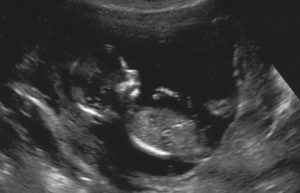Ultrasounds
 On average, we perform at least four ultrasounds per pregnancy. We will perform them at the practice – one at your first exam (at about 8 weeks) and at 12 weeks, to determine if the child has a heartbeat, whether it’s a single baby or multiple babies. Additionally, it’s important to us to establish a reliable due date.
On average, we perform at least four ultrasounds per pregnancy. We will perform them at the practice – one at your first exam (at about 8 weeks) and at 12 weeks, to determine if the child has a heartbeat, whether it’s a single baby or multiple babies. Additionally, it’s important to us to establish a reliable due date.
At 20 weeks pregnancy, we will perform an elaborate ultrasound at Keik. During this specialized exam, your child is examined for a number of abnormalities. However, a positive outcome of the ultrasound does not guarantee that your baby is healthy. Small or difficult to detect abnormalities, such as, for example, a specific heart defect or autism, are not detected on an ultrasound.
We will perform another ultrasound to determine growth at 28 weeks of pregnancy. It is sometimes necessary to perform additional ultrasounds.
All echoes are and always will be snapshots: unfortunately, things can always be missed.


